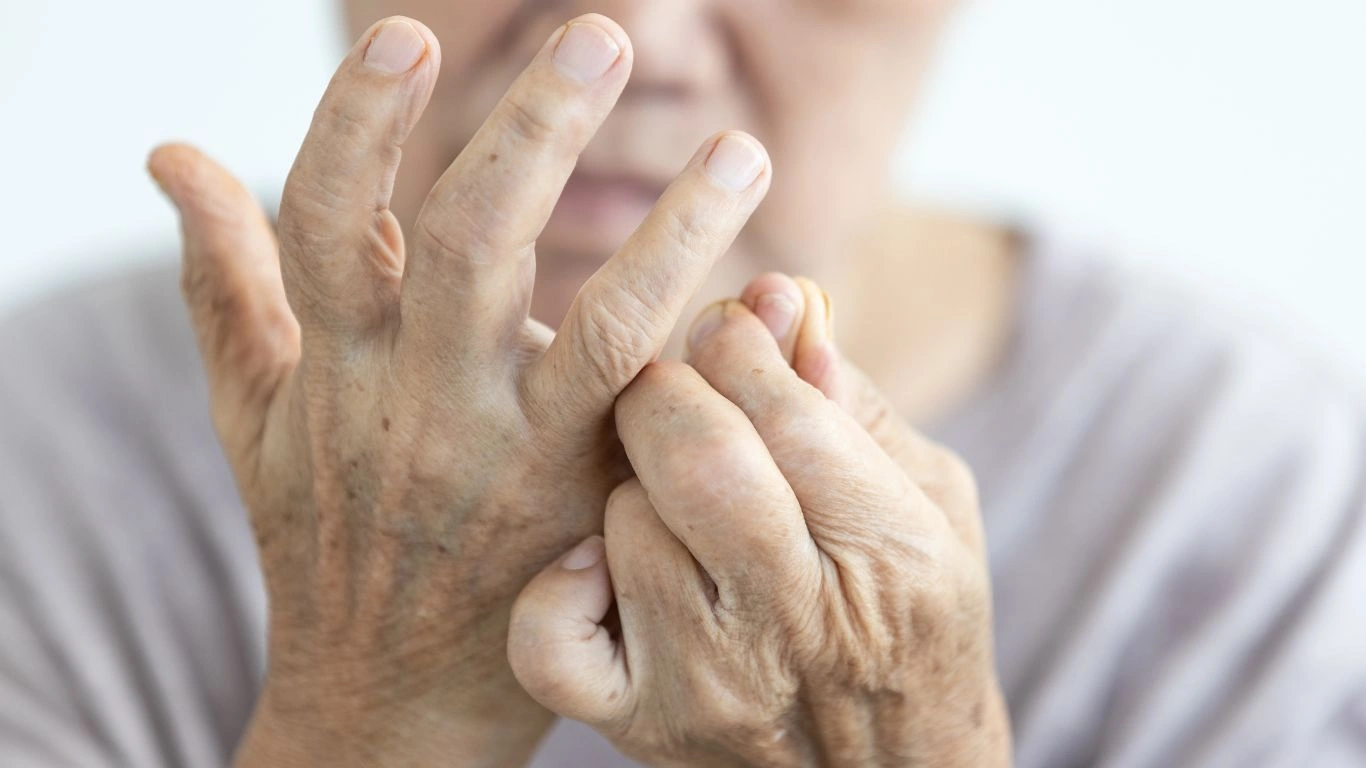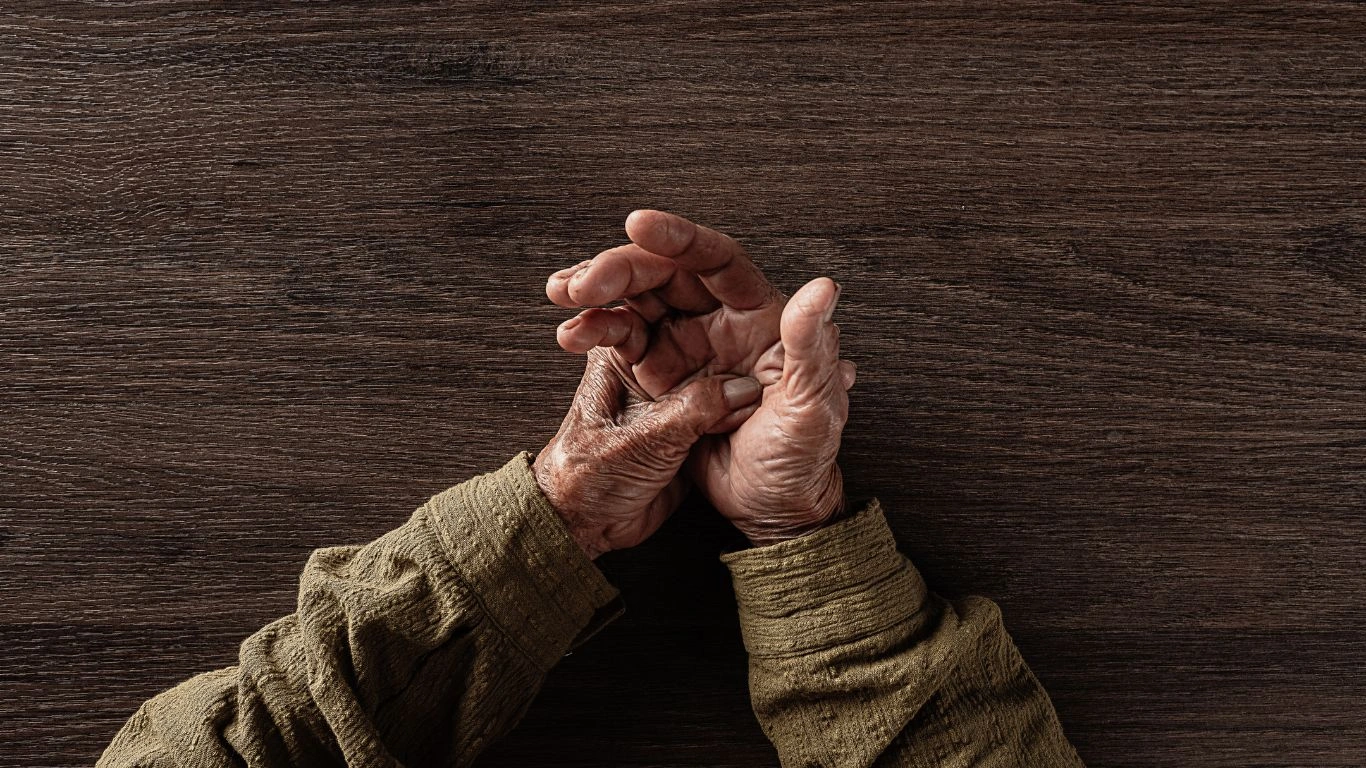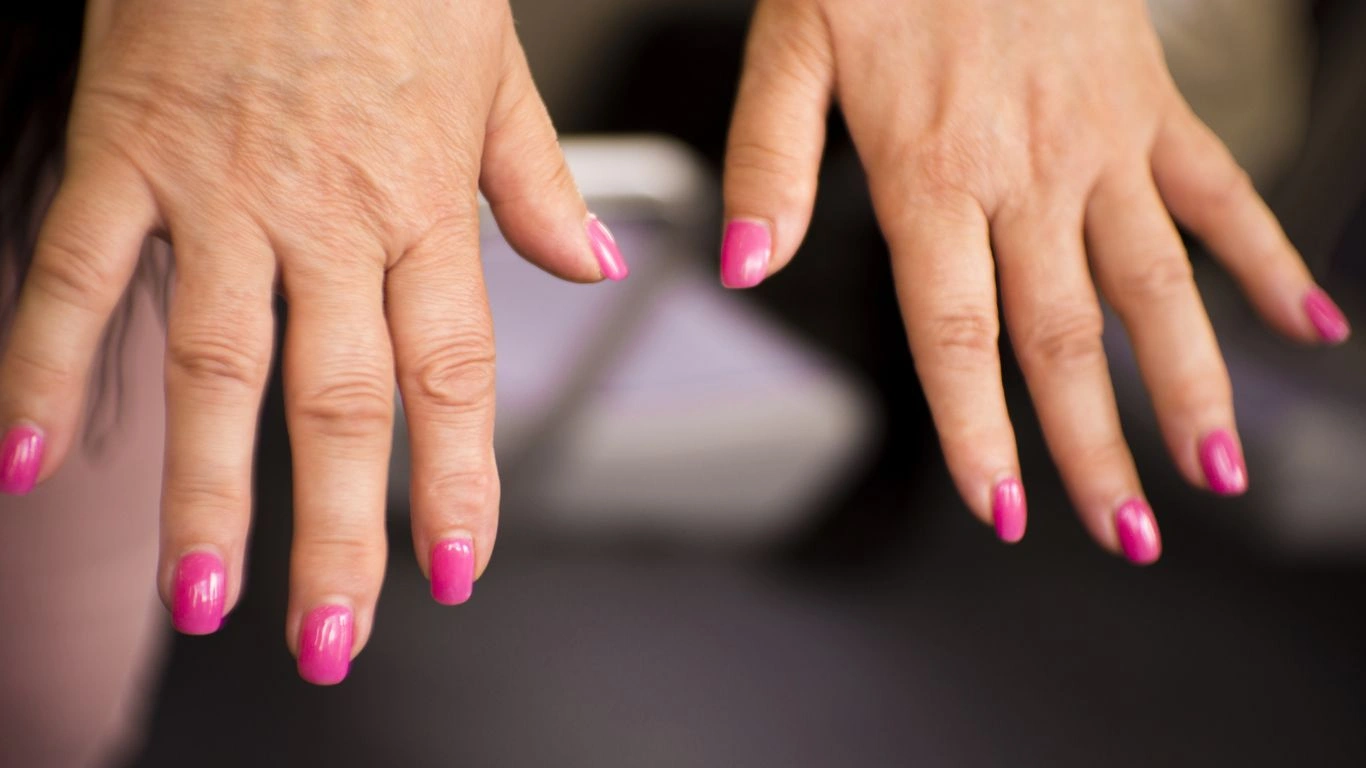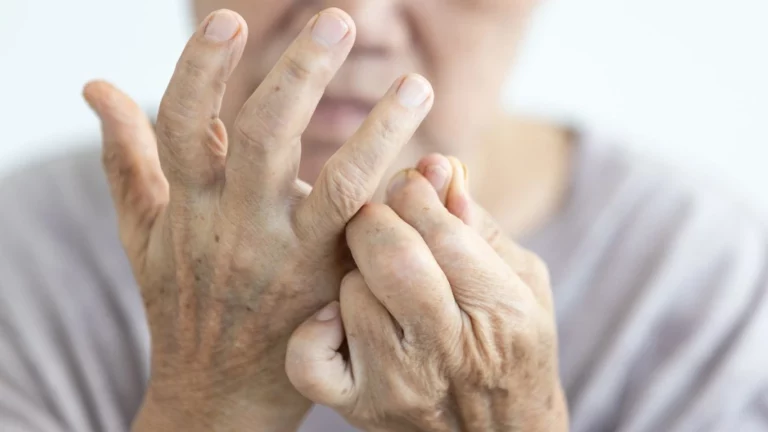Coping with Rheumatoid Arthritis Fatigue: Essential Tips for Daily Energy Boosts
Let’s talk real life with rheumatoid arthritis and how to cope with daily fatigue—because if you’re anything like many of the patients I’ve worked with, this isn’t just about joint pain or stiffness. It’s that crushing, all-over exhaustion that hits like a freight train, sometimes even before your feet hit the floor in the morning. I’ve had patients tell me it feels like their body is stuck in molasses, no matter how much they rest. And I get it—because fatigue isn’t always something you can “push through.”
What Does Fatigue in Rheumatoid Arthritis Actually Feel Like?

This isn’t your everyday “I stayed up too late” tired. Rheumatoid arthritis fatigue is complex, and often unpredictable. As someone who has spent years listening to patients describe it, I can tell you it’s one of the most frustrating and overlooked symptoms of RA. People describe it as a bone-deep weariness, like your limbs weigh 50 pounds each. Sometimes, the fatigue is so intense that brushing your teeth or preparing a simple meal feels like a major event.
One of my longtime patients once said, “It feels like my energy tank is permanently on E, and I can’t refill it no matter what I do.” That stuck with me. And unfortunately, this isn’t uncommon. The tricky thing is, fatigue doesn’t always correlate with how inflamed your joints are—or even show up clearly in lab results. But it’s real. It’s valid. And it deserves attention.
Why Does RA Fatigue Happen?

The causes of fatigue in RA are tangled up in both the disease process and the ripple effects it has on your body. Here’s what’s going on under the hood:
- Chronic inflammation: Your immune system is constantly revved up, attacking healthy tissue. This uses up a surprising amount of energy.
- Pain-related sleep disruption: It’s hard to get deep, restorative sleep when your joints are throbbing at 2 AM.
- Medications: Some treatments can have fatigue as a side effect. And let’s be honest, juggling meds with daily life can be exhausting in its own right.
- Emotional toll: Depression and anxiety often ride shotgun with RA, and both can sap your energy reserves in ways that sneak up on you.
- Deconditioning: When movement becomes painful, activity drops—which leads to more fatigue. It’s a vicious cycle.
So if you’ve ever wondered why you’re so exhausted even when your blood work is “normal,” you’re not imagining things. Fatigue is a multi-layered beast in rheumatoid arthritis. And learning how to manage it takes more than just willpower—it takes strategy, support, and a bit of experimentation.
Practical Strategies: How to Cope with Daily Fatigue in Rheumatoid Arthritis

1. Start with Energy Budgeting (a.k.a. Pacing)
This is a huge one. Think of your daily energy as a limited budget. You wouldn’t spend your whole paycheck in one go, right? The same goes for your energy. Spread out activities, take breaks before you feel depleted, and prioritize what truly matters that day.
I often recommend patients keep an energy journal for a week or two—just jot down when your energy dips or peaks throughout the day. Patterns usually start to emerge, and that’s gold when you’re trying to schedule tasks more realistically.
2. Embrace the Power of “No”
I can’t tell you how many of my patients struggle with this one, but it’s essential. Saying no to things that drain you doesn’t make you rude—it makes you smart. Your health comes first. Period.
One patient shared that she began using a color-coded calendar system—green tasks for things that energize her, yellow for neutral, red for drains. Over time, she aimed for fewer red days, and guess what? Her fatigue improved noticeably.
3. Quality Sleep Over Quantity
This one seems obvious, but RA often messes with sleep in sneaky ways. Whether it’s pain, stress, or side effects of meds, disrupted sleep is a huge culprit in persistent fatigue. The goal isn’t just “more sleep”—it’s better sleep.
- Stick to a consistent sleep-wake schedule—even on weekends.
- Create a calming wind-down routine. Think low lights, warm bath, maybe some lavender oil.
- Limit screens an hour before bed—blue light throws off your natural sleep rhythms.
Bonus tip from the clinic: One patient started using a weighted blanket and said it made a massive difference. Everyone’s different, but small changes add up.
4. Move When You Can—Even a Little
This one can feel counterintuitive, but gentle movement (when you’re not in a flare) can actually increase energy. We’re not talking intense workouts here—just short walks, stretching, tai chi, or even chair yoga. Think “motion is lotion” for your joints and your brain.
When one of my patients started doing five minutes of gentle stretching every morning, she noticed her fatigue didn’t hit as hard mid-morning. That’s the kind of feedback that makes this job so rewarding.
Nutrition That Supports Energy When You’re Dealing with RA Fatigue

Let’s chat food. I’m not here to push strict diets or overwhelm you with what not to eat. But I’ve seen firsthand how even small nutritional tweaks can help take the edge off fatigue in rheumatoid arthritis. You don’t need to become a full-time chef—just being mindful of what fuels your body can go a long way.
Anti-inflammatory foods can help calm your immune system’s overactivity. Think of it as giving your body a breather. My go-to suggestions for patients include:
- Omega-3 rich foods: Salmon, walnuts, chia seeds—these support joint health and may ease fatigue.
- Colorful fruits and veggies: Packed with antioxidants that help fight inflammation and free radicals.
- Whole grains: Brown rice, oats, and quinoa provide steady energy without the crash.
- Hydration: Fatigue sometimes stems from something as basic as not drinking enough water. Herbal teas count too!
One patient of mine started prepping smoothie packs with spinach, berries, almond butter, and flaxseeds. She’d just toss one in the blender each morning, and boom—instant anti-inflammatory fuel. No stress, no guesswork.
Also, if you suspect a food sensitivity (gluten and dairy come up often), try tracking what you eat and how you feel afterward. Sometimes your gut has more to say than your lab work does.
The Emotional Weight of Fatigue and How to Lighten It

Now let’s talk about something a little less tangible but just as real—the emotional side of chronic fatigue. Because it’s not just your body that feels heavy. It’s your mind. And no, you’re not being “lazy” or “dramatic.” That inner voice that whispers you should be doing more? Let’s turn down the volume on that.
Fatigue can easily spiral into frustration, guilt, and even depression. Especially when others don’t see what you’re going through. I’ve had patients tear up in appointments because their friends or family members just didn’t get it. “You look fine” doesn’t mean you feel fine.
Here are a few gentle ways to support your emotional health:
- Therapy or counseling: Having a safe place to vent or sort through emotions can be incredibly freeing. You don’t have to do this alone.
- Mindfulness & meditation: Even just five minutes a day can help calm your nervous system and make fatigue less overwhelming.
- Gratitude journaling: This isn’t just fluff—it rewires your brain to focus on what’s working, not just what’s hard.
One woman I worked with started every morning by writing down three things she was grateful for—sometimes as simple as “my heating pad” or “a good cup of tea.” It helped shift her energy, even on the tough days.
How Support Systems Can Make or Break Fatigue Management

Let’s be real: Coping with daily fatigue in rheumatoid arthritis is a lot easier when you’ve got the right people in your corner. That doesn’t always mean a big crowd—but even one or two people who truly understand can make all the difference.
Who Should Be On Your “RA Team”?
- Rheumatology provider: (Hi, that’s me!) Your NP, rheumatologist, or care team should be your medical GPS. We’re here to troubleshoot with you, adjust treatment plans, and validate your experience.
- Family or close friends: The ones who are willing to learn and listen—even if they don’t always “get it.” Educate them when you can. Hand them articles. Show them what a flare day looks like.
- Support groups: Online or in-person groups can be gold mines of encouragement and practical tips. Sometimes you just need to hear, “Same here. You’re not alone.”
I always recommend that patients let their loved ones in, at least a little. Fatigue isn’t weakness—it’s part of your condition. And people can’t support you if they don’t know what’s going on. I’ve seen relationships transform when someone takes that brave first step to say, “Hey, this is what I’m going through.”
Boundaries and Communication Matter
Setting boundaries is a form of self-care, not selfishness. You’re allowed to cancel plans if your body needs rest. You’re allowed to say no to things that don’t serve your health. And you don’t owe anyone a detailed explanation.
I always tell my patients, “You teach people how to treat you by how you treat yourself.” Show yourself compassion, and others will follow your lead.
Supplements and Natural Aids That May Help with RA-Related Fatigue
This is where I give you the Nurse Practitioner spiel: Always check with your provider before starting any supplement. But that said, there are a few that come up often in clinic conversations when it comes to boosting energy and supporting overall well-being in RA.
- Vitamin D: Low levels can contribute to fatigue and worsen inflammation. Worth getting checked!
- Magnesium: Helps with muscle relaxation and sleep quality—two biggies when you’re exhausted.
- Turmeric (curcumin): Natural anti-inflammatory that some patients find helpful, especially for morning stiffness.
- Iron (if deficient): Anemia is common with chronic disease and can seriously zap your energy.
One patient was dragging for months despite decent RA control. We finally tested her iron and B12—both were in the basement. Once we got those numbers back up, she said it felt like someone turned the lights back on. Always worth exploring the full picture.
And don’t underestimate the basics: sunshine, fresh air, connection, movement, purpose. These might sound simple, but they’re powerful medicine too.
Tech, Tools, and Tricks to Make Fatigue Days Easier

Let’s be honest—sometimes the best support on fatigue-heavy days isn’t another supplement or mantra… it’s the right tool for the job. There are gadgets and time-savers out there that make life with RA feel a little less uphill. I’ve had patients swear by some of these, and I use a few myself for managing energy wisely.
Helpful Tools I Recommend in Practice
- Electric can openers and jar grippers: Save your wrists for something better than fighting with the peanut butter jar.
- Voice-to-text apps: Great for journaling, texting, or working when typing gets too tiring.
- Meal kit subscriptions or pre-cut veggies: Less chopping = more energy saved.
- Wearable reminders: Smartwatches or reminder apps can prompt you to hydrate, stretch, or take meds without mental load.
One of my patients found a rolling laundry basket on Amazon and told me it changed her life. It’s these small tweaks that add up to big energy wins when your tank is low.
Apps That Can Actually Help
Not all apps are time-wasters. Some are energy-savers. Here are a few I often suggest:
- Symple: A clean, easy app to track fatigue, pain, flares, and what might be triggering them.
- Insight Timer: Free meditations and calming music for better rest or midday recharge breaks.
- Spoonie Day: Designed specifically for chronic illness pacing—super helpful for energy budgeting.
And yes, some days you’ll still need to say, “Nope, not today.” These tools just help make those “nope” days a little smoother.
Working with RA Fatigue: Finding Your Balance

Let’s talk about work—whether that means a 9-to-5 job, freelancing, caregiving, or managing your home. Fatigue doesn’t clock out when your shift starts. So figuring out how to balance career and chronic fatigue? That’s an art.
Talk to Your Employer (If You Can)
I know this isn’t always easy or even possible, but when it is, being honest with your boss or HR rep about your needs can open doors to accommodations. Many people don’t realize that fatigue from a chronic illness like RA can be covered under workplace protections.
Reasonable accommodations might include:
- Flexible start times
- Work-from-home options on flare days
- Ergonomic chairs and keyboards
- Breaks to rest, stretch, or move
I’ve helped several patients get the support they need at work simply by writing a brief provider note outlining how fatigue impacts their function. You don’t need to over-explain—just advocate for what keeps you productive and well.
Energy-Saving Work Habits
Even without official accommodations, small tweaks can help:
- Batch tasks: Grouping similar tasks together reduces the mental “switching” drain.
- Use timers: Work in 25-minute focused bursts with 5-minute breaks (hello, Pomodoro method!).
- Pre-plan rest periods: Don’t wait until you’re wrecked—build in recovery moments proactively.
One patient set a recurring “stretch and breathe” calendar alert on her computer at 11:30 every morning. Not only did it help with fatigue, but she said it kept her more focused too.
Reframing Rest: You’re Not Lazy—You’re Listening
Let’s break the stigma around rest. Rest isn’t the opposite of productivity—it’s a requirement for it. Especially with rheumatoid arthritis, pushing through fatigue like it doesn’t matter usually backfires. I’ve seen it countless times, and I’ve said this to more patients than I can count: resting is part of your treatment plan.
So how do you embrace that in real life?
- Schedule rest: Literally block it off on your calendar. Treat it like a doctor’s appointment—non-negotiable.
- Change the narrative: Instead of “I should be doing more,” try “I’m doing what my body needs today.”
- Create a cozy rest space: A comfy chair, good lighting, maybe a weighted blanket—whatever helps your body and brain exhale.
Personally, I always keep a basket near my reading chair stocked with tea bags, a journal, and an aromatherapy roller. When I hit my wall, I don’t have to think—I just go straight there and recharge.
When to Speak Up: Fatigue That Deserves a Second Look
Finally, let’s talk about when fatigue might be a red flag. Not every wave of tiredness is just “part of the disease.” Sometimes it means something else is going on. And you deserve to be heard—really heard—if it feels off.
Here’s when I recommend reaching out to your provider:
- The fatigue is getting worse, not better, even with treatment.
- You’re feeling lightheaded, short of breath, or losing weight unintentionally.
- You notice changes in mood that don’t lift (like persistent sadness or irritability).
- You’re falling asleep unintentionally during the day or having memory fog that’s affecting your daily life.
We might need to adjust your RA meds, check labs, look at thyroid function, anemia, or even screen for sleep apnea. Fatigue is information. Don’t brush it off. Your body is always speaking—your job is to listen and advocate.
References
Disclaimer
This content is intended for informational purposes only and does not substitute medical advice, diagnosis, or treatment. Always consult with your healthcare provider or rheumatology specialist before starting or changing your treatment plan. The information shared here is based on professional experience and patient anecdotes, but individual needs may vary.

Tarra Nugroho is a dedicated Nurse Practitioner with a strong foundation in family and preventive care. She brings both compassion and clinical expertise to her practice, focusing on patient-centered care and health education. As a contributor to Healthusias.com, Tarra translates medical knowledge into clear, empowering articles on topics like women’s health, chronic disease management, and lifestyle medicine. Her mission is simple: help people feel seen, heard, and informed—both in the clinic and through the content she creates. When she’s not caring for patients, Tarra enjoys weekend hikes, plant-based cooking, and curling up with a good health podcast.






